How to grow a pineapple
Grow your own pineapple at home from a store-bought fruit –it’s fun, decorative and tasty
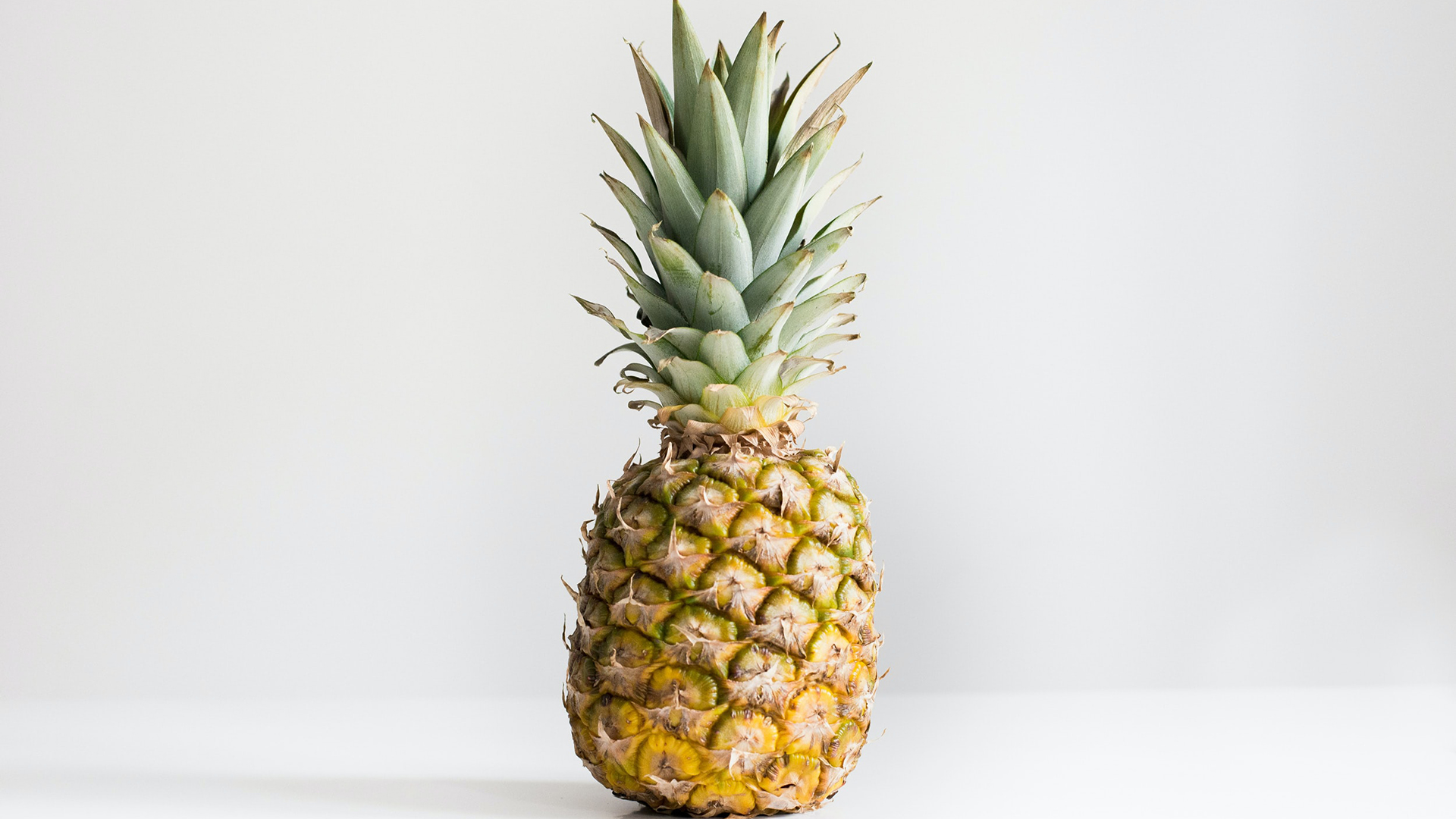
Want to know how to grow a pineapple for yourself at home? It's a fruit that looks and tastes exotic, but it’s surprisingly easy to do successfully. You don’t need anything special, other than a store-bought pineapple, a knife, a container, some potting soil mix and, of course, water and light.
The result will be delicious, plus you’ll get a totally tropical, lush, green house plant to enjoy as an added bonus to your more usual garden ideas outdoors.
Rare and exotic, pineapples were in high demand in the 18th Century. 'They were such a symbol of wealth that special hothouses, known as pineries were constructed to grow pineapples on big country estates,' says Melanie Griffiths, editor of Period Living magazine. The heat was provided by pits of rotting horse manure, on either side of the trenches where the fruit were growing.
'By Victorian times, the rising middle classes would rent a single pineapple for a dinner party to display as a status symbol, returning it the following day,' adds Melanie. 'There must have been a few tricky moments for the proud hostess if guests asked to eat it!'
If only they'd known how simple it is to grow your own pineapple.
How to grow a pineapple
'Pineapples are tropical and native to South America. Because of this, they thrive in direct, bright sunlight. They are a great house plant and are relatively easy to take care of,' says Claire Ransom, founder of LazyFlora.
Keep the leafy top of the fruit rather than discarding or composting it next time you eat a fresh pineapple, because that’s all you need to start growing your own at home. It’s easy to grow a pineapple. Here’s how.
- Take the top slice (about 3/4in) of a shop-bought pineapple, known as the crown. This is the top section with the rosette of spiky leaves that you’d normally discard or put in the compost.
- Trim away the skin and any remaining flesh and peel off a good handful of leaves from the bottom to expose the core. This is where the roots will form.
- Leave the top/middle section of the rosette and the exposed core intact. Now leave the core to dry out in the air for four or five days. Allowing the root to dry out means it’s less likely to rot when you start to grow your own pineapple plant.
- There are two options for the next step – starting your pineapple plant off in water, or starting it off in potting soil. Both methods are easy and work equally well.
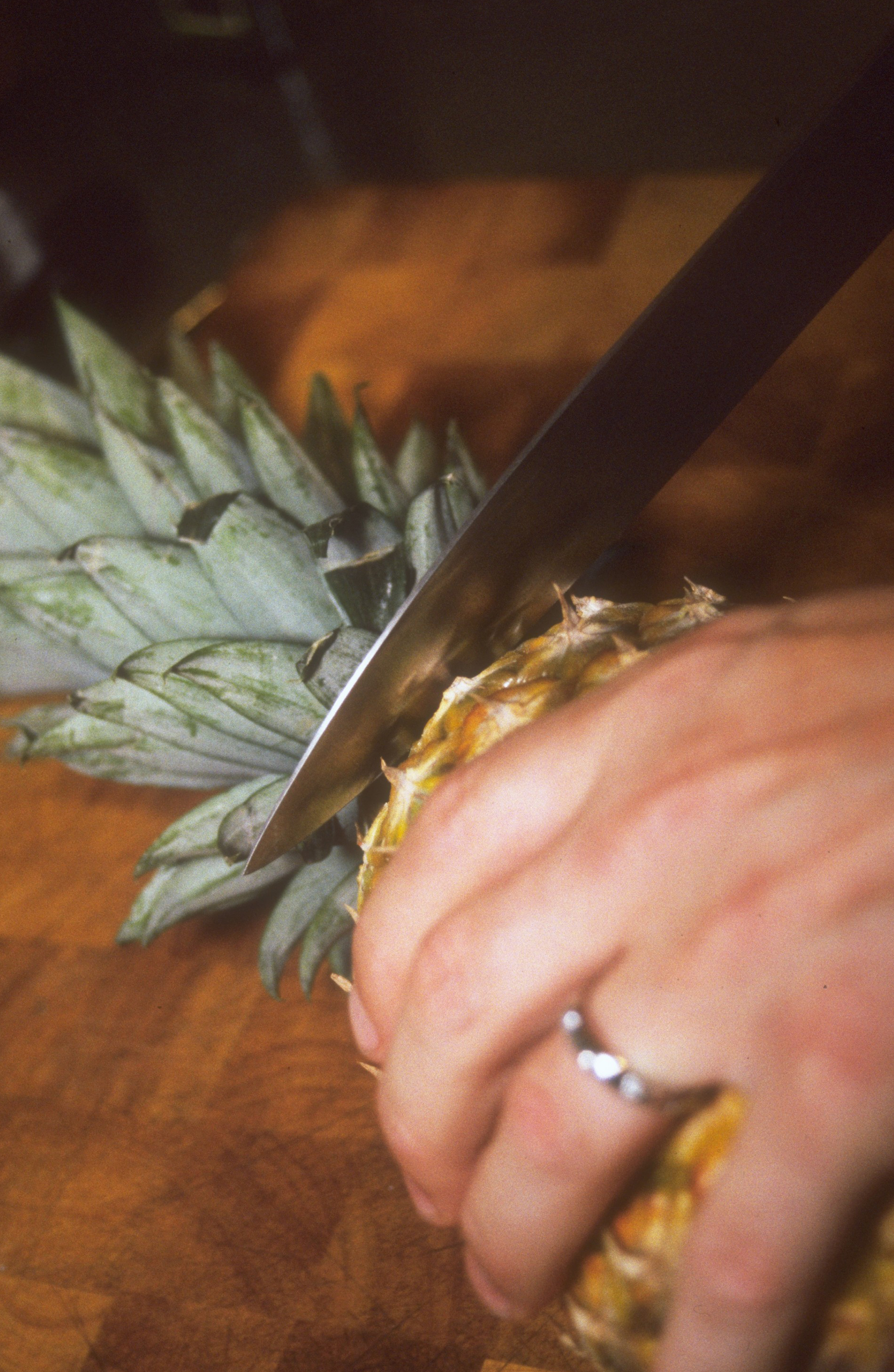
How to grow a pineapple in water
- Place the dried pineapple top in a cup or glass jar of water, so that only the bottom root section – the part where you stripped off the leaves – is under the water line. Refresh the water every two days or so.
- Place the cup in a warm, light place. A window ledge is ideal. You should see roots starting to form within three weeks, and new leaves will begin to emerge from the central rosette.
- Your pineapple plant is ready to pot on when the roots are 2 or 3in long. To pot up your water-grown pineapple, follow the instructions below, (as for how to start your pineapple off in potting soil) taking care not to damage the roots.
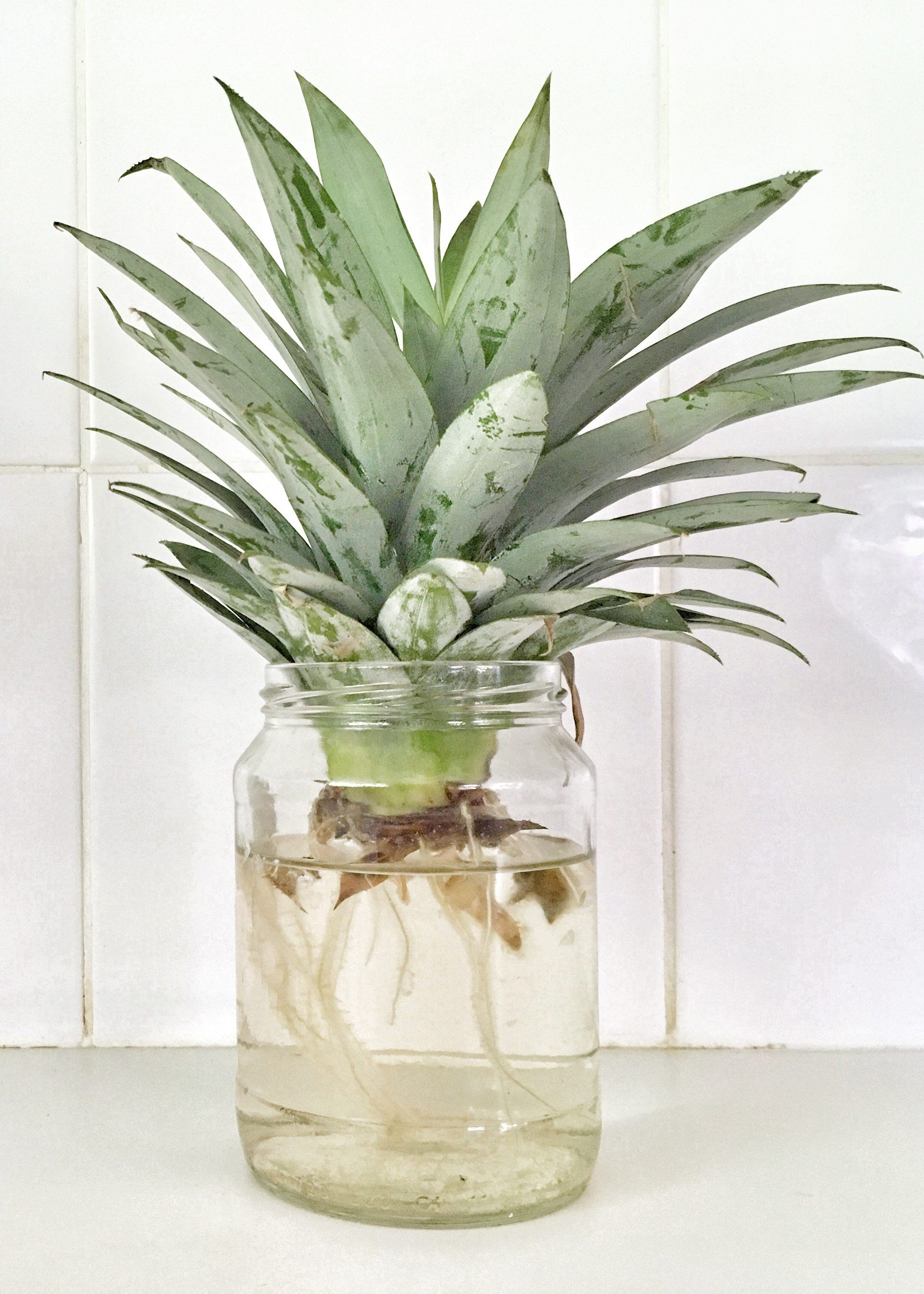
How to grow a pineapple in potting soil
- Prepare your pineapple crown as above, stripping off a good handful of leaves from the base of the rosette.
- Part-fill a 20cm/8in pot with peat free potting compost mixed with horticultural grit and/or sand to help its drainage.
- Place the pineapple crown in the middle and firm up the soil around it.
- Water it well and place in a warm, light place.
- New leaves will appear from the central rosette after a few weeks.
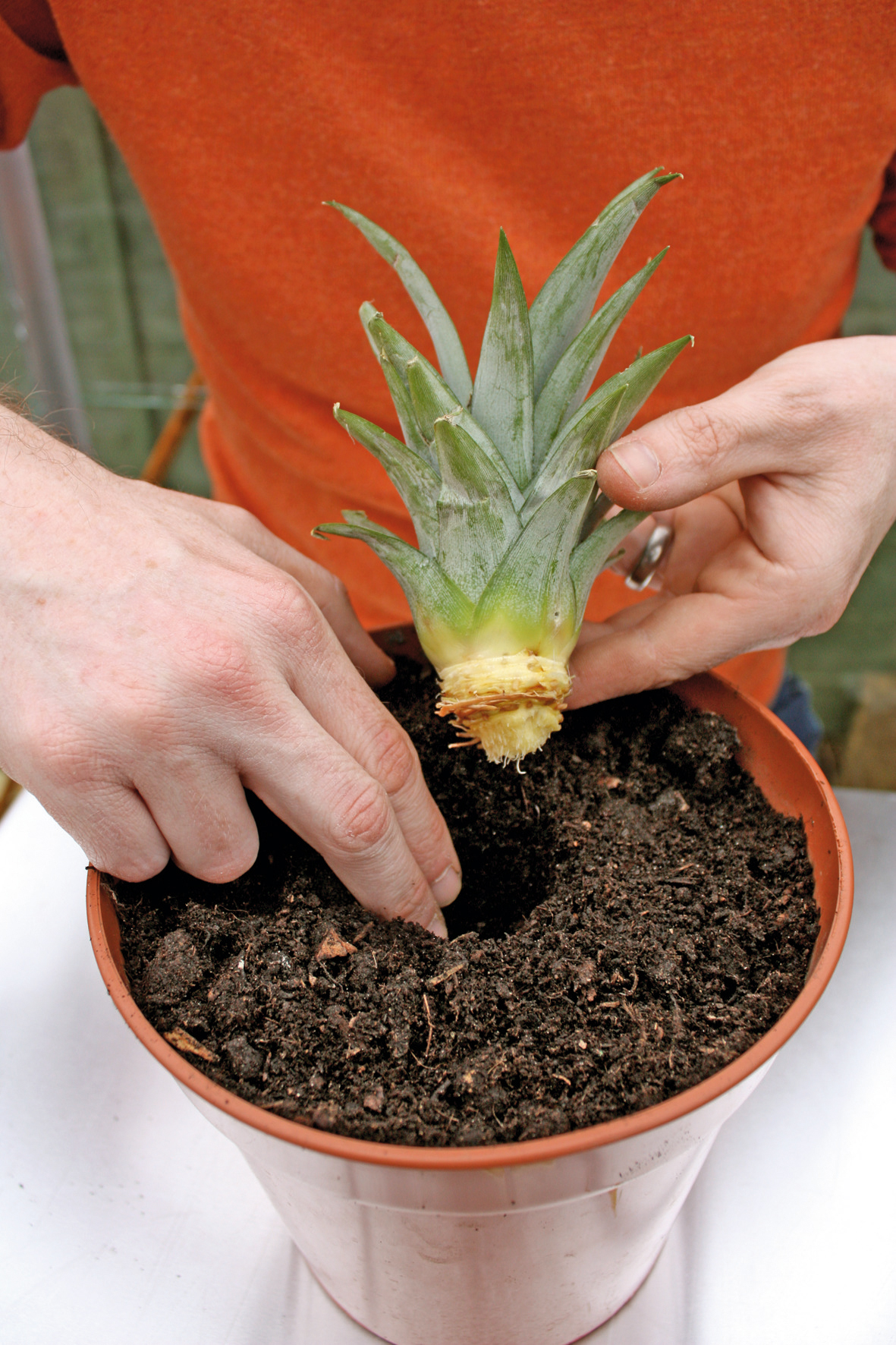
What conditions do you need to grow a pineapple?
The pineapple, or Ananas comosus, is a member of the Bromeliaceae family. It’s a ground plant, not a tree, and has rosettes of long (up to 1m-long) pointed, evergreen leaves. It is native to South America, so will need to be grown indoors or under glass in cooler climates.
Claire Ransom of LazyFlora says, 'The pineapple plant prefers warmer conditions with a dash of sunlight, so anywhere between 22 to 28ºC is ideal. When it comes to watering, less is more. They don’t need a lot of water and sometimes also absorb moisture through their leaves.'
Claire advises establishing a regular feeding routine for your pineapple: 'Give your plant a fertiliser every two months or so. Something with around 6-10% nitrogen, phosphoric acid, potash and 4-6% magnesium will work best.'
The biggest problem when you're trying to grow a pineapple is overwatering. 'It is an easy mistake to make, but you are best to wait for the soil to dry out before giving the plant any more water,' adds Claire Ransom. 'You’re more likely to damage your plant by overwatering it rather than underwatering. To help with drainage, make sure your plant is in a pot with some holes.'
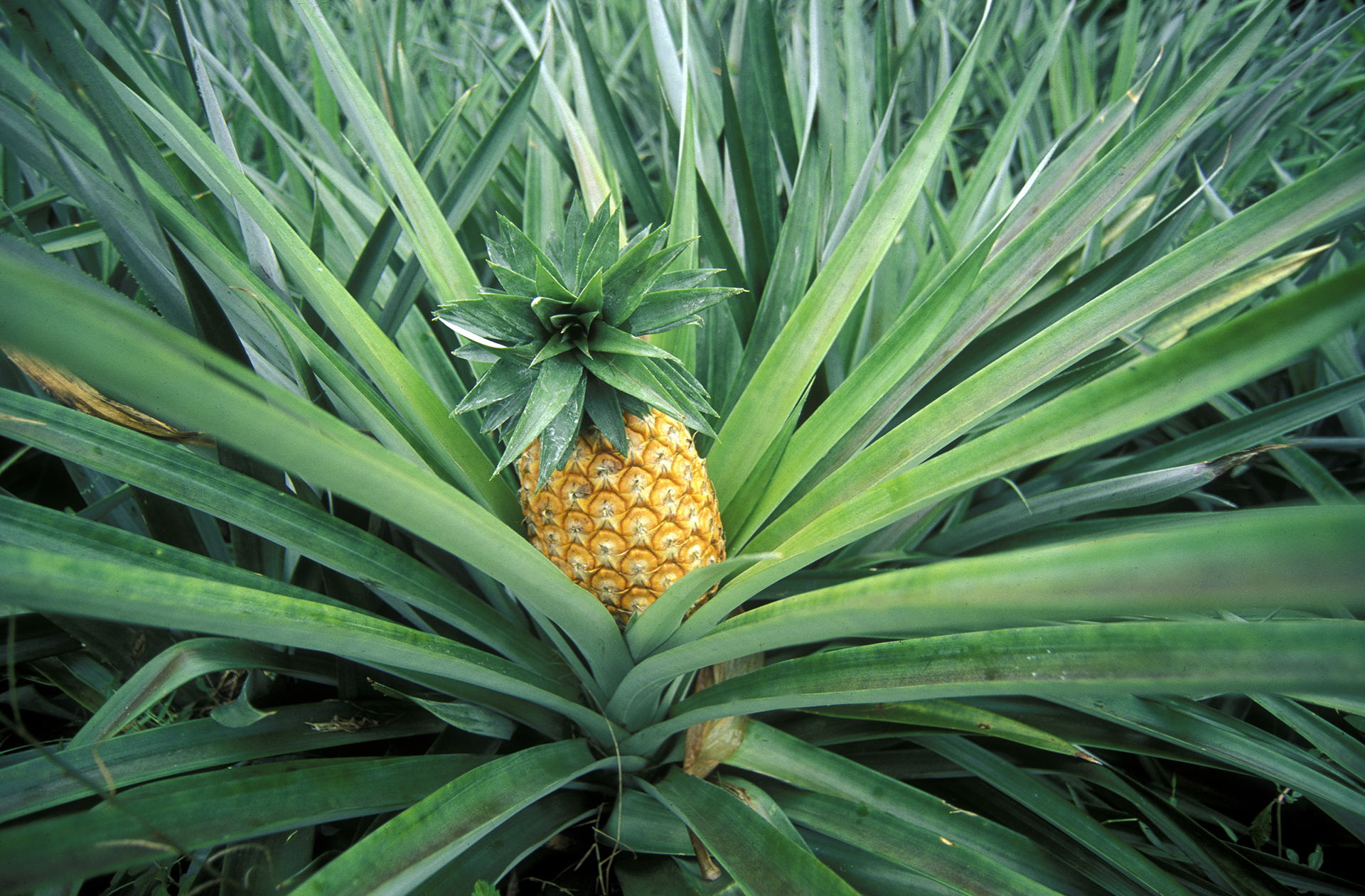
When to repot a pineapple plant
When roots start to appear at the bottom of the starter pot it’s time to repot your pineapple plant into a larger container. Continue to repot every six months to a year as necessary.
If any of the leaves are beginning to turn yellow, this may be a sign of overwatering, says Claire Ransom of LazyFlora. 'If this happens, you can attempt to revive the plant by repotting it in some dry soil and always wait for the soil to dry out between watering,' she adds.
How long does it take to grow a pineapple?
It won’t be long before you start to see new leaves emerging from your pineapple crown (approximately two or three weeks) but, says Claire Ransom, 'growing pineapples requires patience, so don’t worry if you don’t see a spike any time soon. New sprouts can take anywhere between a year or two. They might be a test in patience, but the pineapple will be well worth the wait.'
It may take up to two years to produce an actual fruit, but in the meantime though, you’ll have a striking houseplant and a very real element for your tropical-themed interior scheme.
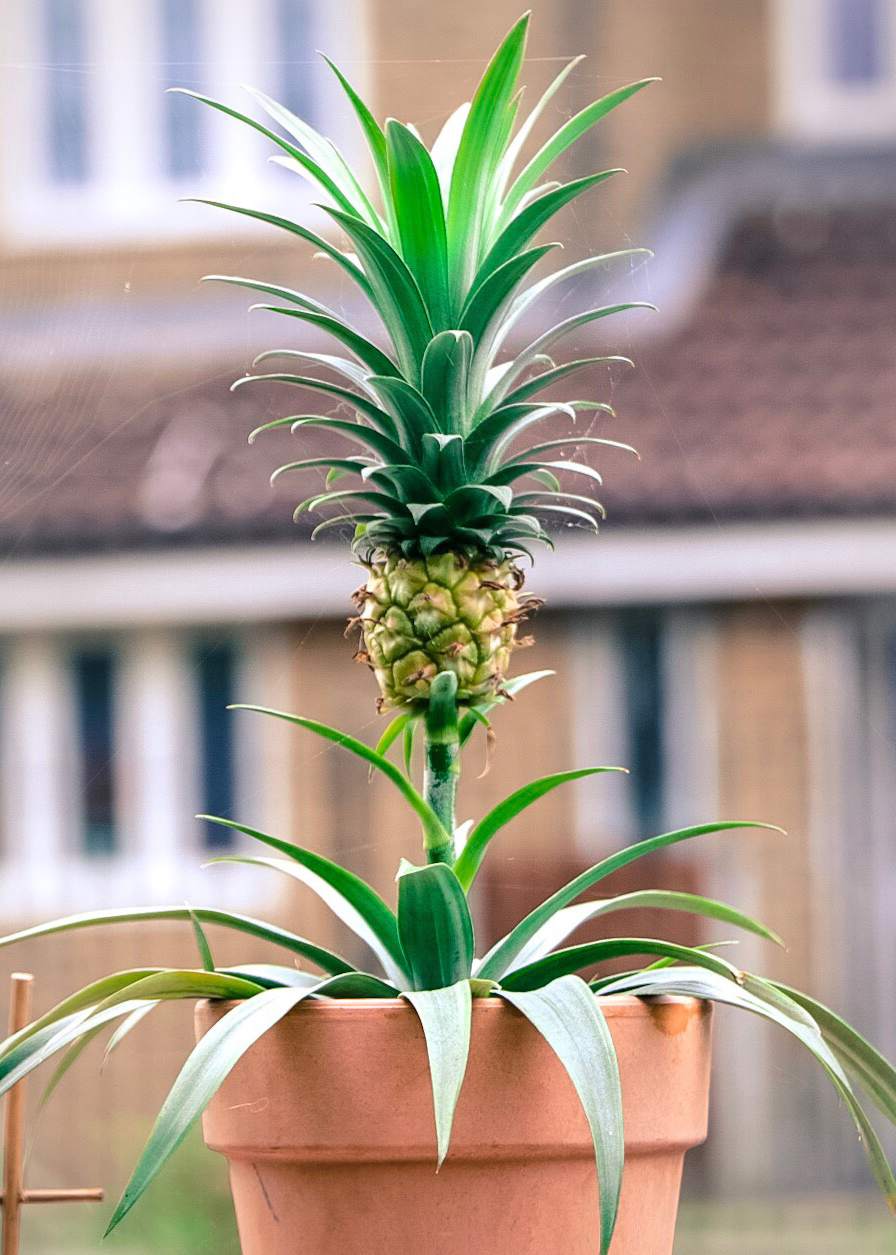
How many pineapples will the plant produce?
A pineapple plant will produce just one pineapple on a long stalk from the middle of the plant. Once the fruit has grown and ripened the plant has done its job and will die. To grow more fruit you’ll need to start the whole process again, or pot up the tiny new shoots that form around the base of the plant before it dies back.
Sign up to the Homes & Gardens newsletter
Design expertise in your inbox – from inspiring decorating ideas and beautiful celebrity homes to practical gardening advice and shopping round-ups.
Karen sources beautiful homes to feature on the Homes & Gardens website. She loves visiting historic houses in particular and working with photographers to capture all shapes and sizes of properties. Karen began her career as a sub-editor at Hi-Fi News and Record Review magazine. Her move to women’s magazines came soon after, in the shape of Living magazine, which covered cookery, fashion, beauty, homes and gardening. From Living Karen moved to Ideal Home magazine, where as deputy chief sub, then chief sub, she started to really take an interest in properties, architecture, interior design and gardening.
-
 Zooey Deschanel and Jonathan Scott's breakfast nook is an innovative, effective use of kitchen space – it turns a 'dead area' into a cafe-style corner
Zooey Deschanel and Jonathan Scott's breakfast nook is an innovative, effective use of kitchen space – it turns a 'dead area' into a cafe-style cornerJonathan and Zooey have situated an eccentric yet elegant dining area in what may have been an otherwise underused corner
By Hannah Ziegler Published
-
 6 things you should never throw in the trash – and what to do for safe disposal instead
6 things you should never throw in the trash – and what to do for safe disposal insteadFrom batteries to space heaters, experts reveal what not to throw
By Andy van Terheyden Published
-
 Water garden ideas – 9 ways to introduce soothing water to your outdoor space
Water garden ideas – 9 ways to introduce soothing water to your outdoor spaceFrom cascading fountains to wildlife ponds, there are plenty of ways to create a tranquil water garden
By Leigh Clapp Published
-
 How to grow poppies
How to grow poppiesFind out how to grow poppies to enjoy the beauty of these brightly colored tissue paper-like blooms
By Leigh Clapp Published
-
 How to grow delphiniums from seed
How to grow delphiniums from seedFind out how to grow delphiniums from seed and enjoy these colorful cottage garden favorites filling beds and borders
By Leigh Clapp Published
-
 How to grow ferns – when and how to plant and care for them
How to grow ferns – when and how to plant and care for themLearn how to grow ferns to enjoy the texture and form of these versatile plants in many areas of your garden
By Leigh Clapp Published
-
 How to grow sweet peas from seed – in borders and pots
How to grow sweet peas from seed – in borders and potsFind out how to grow sweet peas and where to enjoy their wonderful color, ruffled blooms and sweet fragrance in your garden
By Pippa Blenkinsop Published
-
 How to make fat balls for birds – easy steps feed our feathered friends
How to make fat balls for birds – easy steps feed our feathered friendsLearn how to make fat balls for birds to ensure their wellbeing throughout the winter
By Holly Reaney Published
-
 Planning a kitchen garden – from layouts to picking the best crops
Planning a kitchen garden – from layouts to picking the best cropsPlanning a kitchen garden is easy with this expert advice – whether yours is in beds, borders or a dedicated patch – you're guaranteed success
By Leigh Clapp Published
-
 How to grow cosmos – expert tips on when and where to plant these flowers
How to grow cosmos – expert tips on when and where to plant these flowersLearn how to grow cosmos to add bright color in your garden from summer through to fall with their beautiful blooms
By Leigh Clapp Published